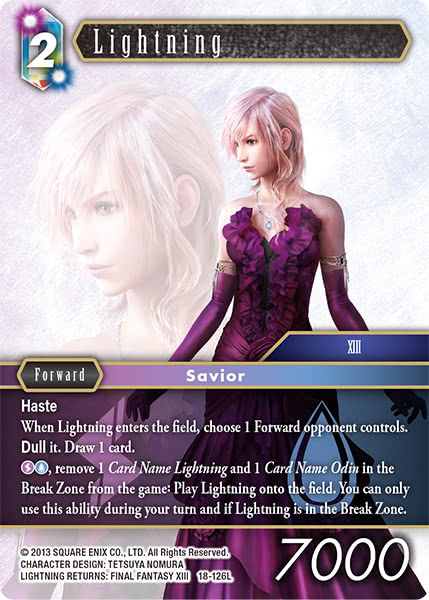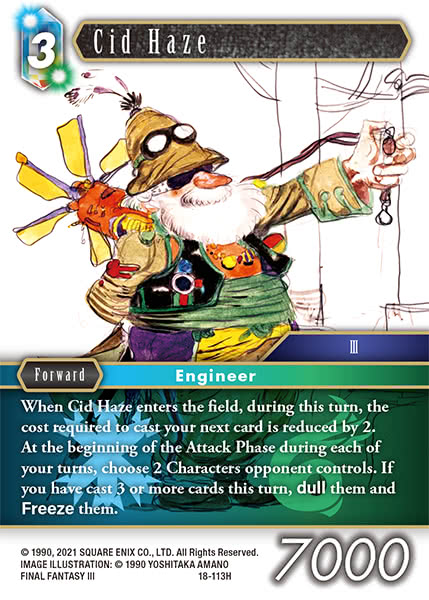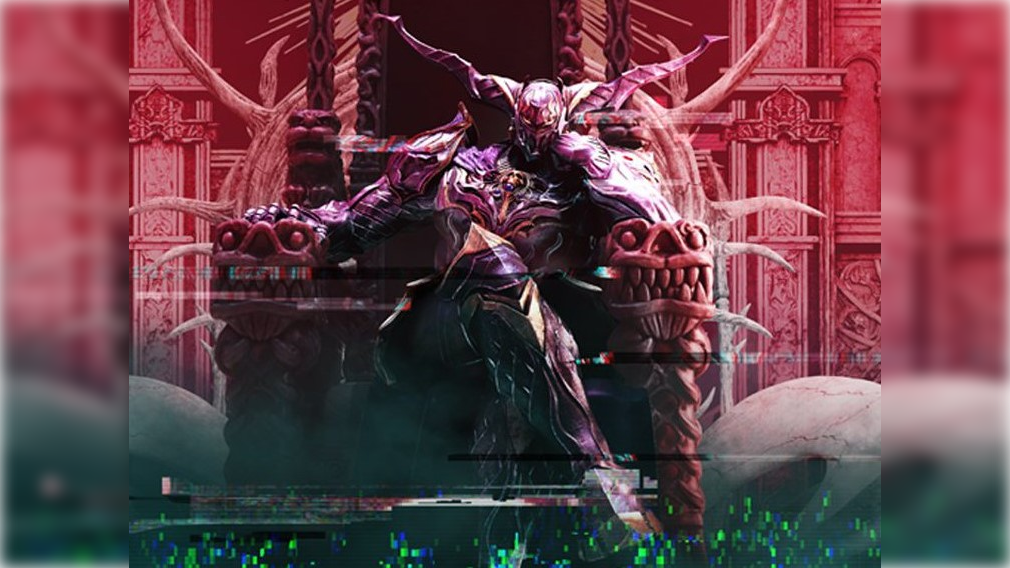Welcome to our latest edition of Meta Analysis at The Bear Den. In this new series, we will delve into the current meta of the latest Opus to provide insights and information for new players and shed light on the current state of the meta. We will analyze tournament events, explore new deck concepts, and discuss potential impacts on existing decks. While this may not be an exact science, as it is based on playtesting and experience, we aim to provide our best insights. The best part is that you can come back in two months and provide feedback on how accurate we were! Without further delay, let’s dive into our first analysis!
Opus 19 Overview – Aggro time?
Opus 19 has been available for about a month now, and while there haven’t been any major events yet, local tournaments are starting to happen and results are starting to come in. It seems that the Opus 19 meta is shaping up to be very aggressive with fire/lightning and fire/ice XIII leading the charge. The set has introduced several new cards that allow players to generate game-winning pressure as early as turn 1, which is causing some concern for Wind players in particular.
Wind has been a strong deck in the meta for a while now, but with the rise of aggro, combo decks like Wind will need to focus on survival cards instead of just combo pieces to stay competitive. While most combo decks are willing to take a few points of damage early on, they can’t afford to take too much damage by turn 3. We’ll have to wait and see if Wind players can find enough ways to stay alive while still assembling their combo pieces.
Decks to Watch Out For
In this section, we will touch on decks that you are going to have to watch out for in prepping for a tournament. For brevities sake, we have chosen what we feel is the best deck in each archetype to review/discuss. This list isn’t exhaustive and you should expect to see these 4 decks. There will be plenty of innovation and new concepts that enter the meta after the first couple of competitive tournaments. We cannot touch on every deck as that would turn into a 30 page book but we will touch on a list of newer decks or decks that have new strategies.
Honorable Mentions
Before we deep dive into newer decks or decks with new purpose, lets take a look at some tried and true staples that you can expect as well.
- Soiree – Soiree received several new cards this set that give the deck a strong boost. The new Warrior of Light (19-128L) | FF Decks gives the deck a menacing threat and color’s fixes to boot. Additionally, the new Zidane (19-108L) | FF Decks can slot right into the deck as well, allowing for strong disuption in the mid-game to keep your opponent from answering your fleet of Soiree Members. Opus 19 – Soiree | FF Decks
- Mono Water – Mono Water saw a massive resurgence in Opus 18 as the new Ashe and Lenna breathed life into a stale archetype. Equipped with top flight EX Bursts and tools for every situation, Mono Water is a force. Oh, did we mention Leviathan, Lord of the Whorl (14-102L) | FF Decks is still pretty good? Opus 19 – Mono Water | FF Decks
- Cat VIII – In our opinion, this deck is the second best aggro option in the format, only being surpassed by its younger sibling from XIII. It was formed in the previous Opus with the help of the new Seifer (18-075R) | FF Decks and Cid Kramer (18-076C) | FF Decks. The latest Opus introduced Y’shtola (19-124L) | FF Decks, which fits perfectly into the deck. While not as heavily focused on all out aggression as XIII, this deck can definitely out-pace setup-oriented decks to claim victory. Opus 19 – FFVIII | FF Decks
Fire/Lightning XIII

The cat is out of the bag on this elite aggro deck. One of the few true aggro decks in FFTCG that should be able to punch in the upper echelon of competitive play. The deck has the capability of consistently dealing you 4/5 points of damage by turn 2 while retaining the multiple cards in hand for potential counter play and board reloads if the opponent can clear the initial wave.
The premier card is Opus 19 Starter Lightning (see left) with an elite ability to draw cards and double strike if you have enough attackers. Aggro in most card games has one major weakness: running out of steam too quickly. Lightning completely eliminates that problem with the extra card drawn for each subsequent attack after the first. She is the reason the deck can exist in the competitive space and all decks must contain instant speed removal that can prevent her abilities from taking over the game.
Outside of Lightning and what makes the deck truly competitive, is the elite ability to search and assemble its core pieces without deviating from its aggro gameplan. A notable standout in the deck is Hope (19-137S) | FF Decks. An all around good card that allows for searching your missing pieces early and removing the opponents board to break stalemates. It is also a XIII character which feeds Lightning’s attack ability.
Finally, a card worth mentioning in the deck is Amaterasu (12-002H) | FF Decks. Amaterasu has been a staple in the meta since its release in Opus 11; however, it was often used to try to lock your opponent out of playing on entry abilities and stall out your opponent. Here, Amaterasu is used as a defensive measure to prevent your opponent from stabilizing against your aggro. Players use Amaterasu to stop board wipes or high impact forwards from achieving their goals. The card doesn’t have to even kill the forward, it simply needs to prevent the comeback effect the opponent played. Cards like Shantotto and Titan become a large vulnerability against XIII since the cost difference between Amaterasu is simply too large to ignore.
Opus 19 – XIII Aggro | FF Decks
Water/Earth Unei

Water Earth has long been the dominant summon-focused element combo, dating back to the days of Doga, Sophie, and Macherie. In Opus 19, this combo has made a comeback thanks to the powerful Unei (see left), a 6-drop forward that can be played for a discounted cost as early as turn 1 and has a flexible activation effect that allows for the recurring of any summon. Against faster decks, this combo can continually recur cards like Madeen (19-104H) | FF Decks and Atomos (15-106C) | FF Decks to remove threatening forwards, while against slower decks it can use 3cp Hecatoncheir (8-083C) | FF Decks to break expensive backups and bounce cheaper ones back to the opponent’s hand. Backup Rydia (19-068R) | FF Decks is a crucial tool that allows the deck to run only one copy of Madeen and still find it when needed. Versions of the deck that run Fenrir, 3cp or 5cp Atomos, Madeen, and 5cp Hecatoncheir have proven effective against most aggro matchups, including Category XIII.
These versions often rely on Tidus as their light forward of choice, followed up by Unei on turn 2 to slow down the XIII player. Other variants forgo backup Rydia and instead use forward Rydia, which allows for free summon casting but also increases vulnerability to 2cp forward removal. Overall, this deck is very efficient and fares well against most non-Wind decks; even against Wind, the backup removal can sometimes be too much for the Wind player to handle, making Unei a great option for the meta. However, players should note that Unei’s 6 cost allows her to dodge Tidus, so specialized removal will be necessary to deal with her, and backups that cost 3 or more may be problematic to include compared to similarly strong 1cp or 2cp backup options. Cards like 4cp backup Sazh are weaker in this meta, but players shouldn’t cut cards like Sara or Norschtalen.
Opus 19 – Unei Summoners | FF Decks
Water/Lighting Army of One

This deck has been around since Opus 18 but never gained the traction or attention it deserved. An excellent anti-aggro deck, that can hard punish cheap forward spam on the back of several EX bursts and elite small body removal. This deck functions as an all out tempo deck that can really accelerate quickly to 3/4 damage without committing many resources to the board. Unlike XIII, this deck does not need to commit to a wide board to deal pressure but instead relies on high value forwards. Often relying on a single forward out as its primary offense but uses abilities and summons in hand to push additional damage. It also has a wide array of monsters that really gum up the board and make combat and removal difficult. This deck lives up to the concept of Lightning “changing her outfits” in game as you often spend time sequencing which Lightning to put to the field.
The latest additions in this set come in the form of Hope (19-137S) | FF Decks and Lightning (19-082H) | FF Decks. Both of these cards are welcome additions to the deck and provide much more consistency than past versions. The new Lightning has the ability to control early aggro boards with its summon ability while using its free play ability to keep up the tempo. Using Lightning’s ability, break a forward, replay a Hope and go get another Lightning keeping the value rolling and bodies on the field. The deck is susceptible to break zone removal since 2CP Lightning comes from the break zone; however, it has enough Haste and pressure tools to punish players who take time to hit your break zone with cards like Mist Dragon.
Opus 19 – Army of One | FF Decks
Mono Wind FFX

FFX Mono wind has been ruling the scene for a while now, with Luso (17-063R) | FF Decks leading the way. But the arrival of Opus 19 has shaken things up in a big way. With the introduction of Buddy (19-046C) | FF Decks and Rikku (19-051C) | FF Decks, wind players have gained access to several off-element category X cards plus the light Tidus (19-103H) | FF Decks has given fire Jecht (16-131S) | FF Decks a much-needed boost with a new search target. While Paine (19-116C) | FF Decks may not seem like much at first glance, she can provide crucial draw power and break zone disruption against decks like Unei and Lenna Leviathan. Yuna (see left) is another notable card, with the nifty ability to place the forward on the top or bottom of the opponent’s deck. But the real star of Opus 19 is Baralai (12-114R) | FF Decks, who now alongside Althea (12-038H) | FF Decks and Evrae (19-038R) | FF Decks can combo to deal 9k to all opposing forwards. This combo is often faster and easier to set up than the Luso plays of past opuses. These tools allow mono wind to adopt a more resilient control strategy, especially against aggro decks like FFXIII.
Opus 19 – FFX Mono Wind Control | FF Decks
Ice/Wind Storm

Storm has been around as an archetype since the debut of Locke (12-116L) | FF Decks in Opus 12. Since then, we have oscillated between the Mono Wind and Ice/Wind being the best Storm deck in the format. Right now is no different. Both decks are strong and can win a large tournament with the right matchups. However, we give a leg up to the Ice/Wind Storm variant due to its ability to have a chance at shutting down early game aggro with Locke and Cid Haze controlling the board.
The deck received two or three large buffs from Opus 19 depending on your list. Buddy (19-046C) | FF Decks and Rikku (19-051C) | FF Decks bring more consistency to the deck allowing for quick color fixing for Baralai and a dedicated searcher for Yunalesca (16-041C) | FF Decks. This helps the deck’s early turns immensely and relieves a bit of pressure on the Ice CP of the past.
Another card that fits right into the list is Evrae (19-038R) | FF Decks. An excellent 1CP monster that allows you to re-use Rikku or any backup to smooth our your turns. Searchable by Stiltzkin (13-043C) | FF Decks and free the turn its played, the card has little downside and allows more efficient early turns.
Finally, a card that is being tested out in Ice/Wind Storm is Relm (19-127L) | FF Decks. We are a bit off color here but the ability to generate an additional cast towards your cast count is very powerful and duplicating cards like Dryad (18-045C) | FF Decks and Alexander (12-039C) | FF Decks can instantly swing games. We get our Water CP from Filo (15-056R) | FF Decks or we can use Ciz Haze to make Relm free.
Opus 19 – Ice/Wind Storm | FF Decks
Cards to watch for
- Yuffie (18-050L) | FF Decks – Yuffie is an elite attacker and anti-aggro card. Her self protection lasting through your opponent’s turn means that character removal can never stop her. Add in a great special to control the board and you have a top flight card. New 5CP Bahamut (19-130S) | FF Decks, however, is a great answer so be careful using Yuffie against FFXIII decks.
- Neo Exdeath (12-110L) | FF Decks – Not the power house it once was, but can still cheese out a game if you are not prepared for him. Make sure you have an efficient answer in your deck to NXD. Summon based removal works best unless you can take advantage of his ability by sacking a character that you want to replay. Fortunately, the same summons that work against Yuffie work here as well.
- Zidane (19-108L) | FF Decks – The best combo breaker in the game. Zidane will make it very hard to hold combos in hand and puts a lot of stress on low card type decks like Army of One and Storm. Outside of Amaterasu, you can’t really stop his ability efficiently, but you can craft your deck where losing a single card doesn’t have the high impact he requires. Also, an empty hand in some circumstances can be a good play around as well.
- Scale Toad (8-034R) | FF Decks – Scale Toad has been a staple of most discard oriented decks since his release. He has fallen off a bit in the past few opuses only showing up here and there instead of being consistently present. With the new Ice/Earth multi-element cards, however, especially Larkeicus (19-112C) | FF Decks, you should expect to at least see this card in some decks. The new Alexander (19-035R) | FF Decks being a great answer if you are in wind.
- Tonberry (19-097C) | FF Decks – Tonberry is very unassuming but can really stall out a board state. The ability to break anything stops high value forwards from attacking or blocking and the draw on entry makes it a low risk play. Sure he is small at 2k but as is often the case, big things come in small packages.
Closing Thoughts
These are only a few of the decks that you can expect to encounter at Materia Cups and Store Championships this season. Their overall strength and adaptable strategies make them formidable opponents and primary choices for players. However, you won’t only be facing these decks, so we recommend testing against a variety of other decks that cover the different archetypes.
In the first few tournaments, we’ll be keeping an eye out to see if the meta shifts as we expect. First, will Wind find a balance between anti-aggro and Storm-style play, or will they shift towards a more full control FFX list? Can someone find a way to crack Relm and create an absurd summon-based deck? Which deck will emerge to counter the explosive power of XIII? It’s going to be a lot of fun to analyze the results of the first Materia Cup, and we can’t wait. We will follow up with an article reviewing the tournament and predicting how the meta will shift.
We’re really excited for the first competitive season in three years and hope everyone has a memorable season.
Until then, I return to my den of hibernation.
Special thanks to @strategicgamer for the assist in writing and discussing this article!






Leave a Reply